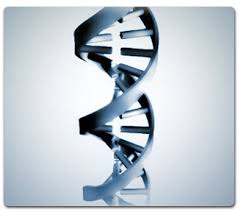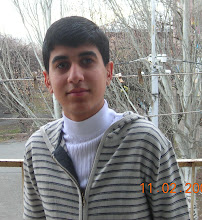суббота, 26 сентября 2009 г.
DOTCOM Phase #3, Module 2 - Exploring REEL BAD ARABS
1.The first thing that came into my mind when I thought about word “Arab” was “Iran”. I can’t explain why, but it was so, maybe because Iran is our neighbor, maybe because this is the biggest Arabic country.
At first seconds of watching this film it was feeling that this film will be about something mysterious, because this film is about Arabs, and almost in all what I listen about Arabs was mystery, at this moment worked REPTILIAN part of my brain.
When I was watching this film at first time the first thing that I think about was horror, I saw dying people, and I think that at that time work Limbic part of my brain.
When I watched this film at second time I think about role of Arabs in the world and cinema. And this is work of neo-cortex part of my brain.
2. PRODUCTION TECHNIQUES-Music.
Music which was used in this film make us to think about Arabs, because when the man hear music which is usual for any nation, our brain begin think about this nation, and we begin listen more carefully and understand better.
3. PERSUASIVE TECHNIQUES-1.RHETORICAL QUESTIONS-When in film the man said “if Arabs are so?”
2. Fear/Defensive nationalism- in film the announcer said “at first Arabs were associated with terrorists”
3. Testimonial- in film was used fragment from film with governor of California Arnold Schwarzenegger. All of us know him, and that why believe this part of film.
4. SUGGESTIONS-I think “REAL BAD ARABS” is good film, and it can become better if the filmmakers has shown the real life of Arabs today. Show their night clubs, restaurants and their usual life. Yes there are different, but they are people too. We must only try to understand them and to learn about them more. Believe me Arabs have good character traits, which we can adopt.
5. Yes I do. Because in this film man can see the history of changing relation to Arabs during the time, and I think it will be interesting to them to watch this film.
пятница, 5 июня 2009 г.
My Top Three REEL ACTION Themes
1. Environment
2. Media
3. Peace/War/Conflict
1. ENVIRONMENT
First of all my own opinion is so: “We are that, what is around us!”
I was born in Erevan in 1993. In that time Erevan and whole world where more clean and more healthy. There wasn’t so many fabrics, cars and other things, which was polluting world atmosphere, there were a lot of kinds animals and plants, which isn’t know. The water was cleaner! Now let’s think, if during 15 years people have changed the world so much, and how we know periods of evolution are becoming shorter and shorter how will be the world when I will be 30 years old! There won’t be clean air, clean water, there won’t be 30% of biosphere! It’ so sad!
BUT!
During hundreds year people destroy the world, but in 20th century was created new science: “nanotechnology”. With the help of it people can save the world and all on it! And I think that now days people understand that we must save the world, even if don't destroy it!
And I hope that during my life thee world will becaome clearer, niver and better, and I will do all for it!
2.MEDIA!
Only 1% of people who live in Yerevan know what does it mean, but 100% of them use it every day!
Let's understand what does it means "MEDIA"
In my opinion MEDIA is tool in the hands of people, which help them be included in the world’s life! All of us use it! We all watch TV, the big part of us read books, newspapers and magazines, and only some of us use Internet! Yes of course all of this (TV, internet, magazines, and books) are part of media! And our task is to tell people around us about that part of media, that they don’t know about, such as blogs =))! And of course every man who count him part of society must tell his opinion if he have any opportunity to do it! =))
3. Peace/War/Conflict
The first and the most important guarantee of life on the world is PEACE. We ( all peoples on the world) must live in peace! And in this way any country of the world will become better, and each man on world will be able to sleep calm.
Such as PEACE is the first guarantee of life on the world WAR is the first danger of it! The wars begins goverments of countries but from it suffer usual people. And different peoples become enemies. And this fact is very-very sad! Becouse why for examplle people who have friends of "enemies nationality" can't tell about it his friends in own country? I don't understand it.
CONFLICT is usual part of our life!There are a lot of conflicts between persons, but there are conflicts between countries too, and they must be solved by the peace negotiations and no by the help of weapons!
THIS IS MY OPINION =)))))))))))))))))))
четверг, 28 мая 2009 г.
воскресенье, 10 мая 2009 г.
phase 2!
Hello! My name is martin! unfortunately I were not selected in that 10 participants, who will take part in Phase 2, but I think it will be interesting for you to watch this video. I am a teenager of 15. I learn in the school numer 113 of erevan! I love my family. My brother is the best friend of mine! He is only for 1 year younger than I! I was born in erevan but left for Russia when I was only 4 years old! There I at first time went to school! Find new friends, went to the art school, train sport! At the atr school I played the piano, learn history of music , act in the small teathre. My day were passing so: I went to school , then to football and then to the art school. And only at 6 o’clock I came home. Those years were the best years of my life! My first forein langueage was german. When I at the first time won olimpiade by it the government of our country congratulate me. Now I come back to my home country! I am happy that I am here! I find a lot of new friends and skills. Finally I learn the language of my ancestor. I have a lot of interests. Now I am interested in DOTCOM, and I am happy that I take part in this project. I find a lot of new friends. All of them are very smart and interesting persons. I love my family, my country and I love my friends. I think that’s all. Bey!
понедельник, 4 мая 2009 г.
Barca The greastes football club in the world!
Several days ago FC Barcelona win Real Madrid on Satiago Bernabeo! 2:6 the last time so big win were more then 50 years ago! This was an historical win!
Go Barca, Go footbal!
суббота, 11 апреля 2009 г.
module#7
I AM GLAD THAT I TAKE PART IN THIS PROJECT!
WHEN I RECIVE THE INVITENTION TO TAKE PART IN DOTCOM, I THINK THAT WILL BE INTERESTING BUT I DIDN'T KNOW THAT IT WILL BE SO INTERESTIN! THIS PROJECT GIVES ME NEW SKILLS, NEW INFORMATION AND THE MOST IMPORTANT NEW FRIENDS!!!
MODULES WERE VERY INTERESTING! THERE WEREN'T VERY HARD! BUT THERE WERE SOMETHING NEW GOR ME, BECAUSE I DIDN'T DO SUCH WORK BEFORE.FOR ME ALL WAS VERY FUNNY AND EXITING!
I HAVE A LOT OF FRIEDS WHO WANTED TO ENTER THIS PROJEST, BUT THERE WAS TOO LATE. AND I THINK THAT IF YOU WILL START THE PROJECT TOMORROW YOU WILL RECIEVE TWICE MORE APLICAITIONS THAN IN THIS TIME! I THINK THAT ALL WAS OK. ONLY HOW SAY NIKO MODULES CAN BE A BIT SHORTER!
JUST FUNNY CARTONS!
I LAUGH A LOT!
Module#5
THIS VIDEO IS UNERSTANDING BY LIMBIC AND NEOCORTEX PART OF BRAIN!
HERE ARE USED 1)HUMOR
2)SYMBOL
3)Big Lie
4)Bandwagon
5)Hyperbole
понедельник, 30 марта 2009 г.
MODULE #3
This video our brain understand with the help of limbic brain! We see nature and think about what color is the picture what kind is musik....
I think that limbic brain work in 60%, REPTILIAN work in 100%, because we at first think "what is it?" and only then "what kind is it?".NEOCORTEX help us to understand what we must or can do with "it".
среда, 18 марта 2009 г.
BarCamp
среда, 18 февраля 2009 г.
INFORMATION ABOUT THE WORLD
My mother is a doctor. She go to the advanced training courses. There she was given this text. I want that all participants of DOTCOM read this text. PLEASE DON’T BE LAZY DO IT…
There will be 57 Azians,21 Europians,14 Americans(north and south),8 Africans, 52 will be women,48 men,70not white,30 white,89 will be heterosexual,11 homosexual,6 people will own the 59% of world capital and all six will be from America , 80 won’t have enough life conditions, 70 won’t be literate,50 won’t have anything to eat,1 will die,2 born, one will have computer,1(only one) will have higher education…
If look at the world in this hand, it will be clear that a need of solidarity, understanding, tolerance, education is very high.
Think about this!
If today in the morning you wake up healthy, you are happier then 1 million people, who won’t be alive to next week.
If you have never lived in the war time, loneliness of imprisonment, the agony and hunger, you are happier than 500 million people in this world.
If you can go to church without frighten and threat of confinement or death, you are happier than 3 milliard people in this world.
If you have any food in your refrigerator, you are dressed, you have roof over head and any bed you are richer than 75% people in this world.
If you have account in the bank, money in the pocket and any coin in the money box you belong to the 8% well-provided people in the world.
If you read this text you are twice blessed because:
1. Anybody think about you
2. You don’t belong to 2 milliard people, who can’t read…
Anybody ever said ”Work, how you needn’t money, love, how anybody don’t hurt you, dance, how nobody look at you, sing, how nobody hear you, live, how it is paradise in the world”.
Tell about this text your friends. If you don’t do this there won’t be anything, but if you do, anybody will smile.
четверг, 12 февраля 2009 г.
module #2 (computer)
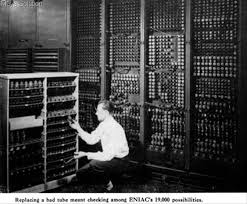
It is difficult to identify any one device as the earliest computer, partly because the term "computer" has been subject to varying interpretations over time. Originally, the term "computer" referred to a person who performed numerical calculations (a human computer), often with the aid of a mechanical calculating device.
The history of the modern computer begins with two separate technologies - that of automated calculation and that of programmability.
Examples of early mechanical calculating devices included the abacus, the slide rule and arguably the astrolabe and the Antikythera mechanism (which dates from about 150-100 BC). Hero of Alexandria (c. 10–70 AD) built a mechanical theater which performed a play lasting 10 minutes and was operated by a complex system of ropes and drums that might be considered to be a means of deciding which parts of the mechanism performed which actions and when.This is the essence of programmability.
The "castle clock", an astronomical clock invented by Al-Jazari in 1206, is considered to be the earliest programmable analog computer.It displayed the zodiac, the solar and lunar orbits, a crescent moon-shaped pointer travelling across a gateway causing automatic doors to open every hour,and five robotic musicians who play music when struck by levers operated by a camshaft attached to a water wheel. The length of day and night could be re-programmed every day in order to account for the changing lengths of day and night throughout the year.
The end of the Middle Ages saw a re-invigoration of European mathematics and engineering, and Wilhelm Schickard's 1623 device was the first of a number of mechanical calculators constructed by European engineers. However, none of those devices fit the modern definition of a computer because they could not be programmed.
In 1801, Joseph Marie Jacquard made an improvement to the textile loom that used a series of punched paper cards as a template to allow his loom to weave intricate patterns automatically. The resulting Jacquard loom was an important step in the development of computers because the use of punched cards to define woven patterns can be viewed as an early, albeit limited, form of programmability.
It was the fusion of automatic calculation with programmability that produced the first recognizable computers. In 1837, Charles Babbage was the first to conceptualize and design a fully programmable mechanical computer that he called "The Analytical Engine". Due to limited finances, and an inability to resist tinkering with the design, Babbage never actually built his Analytical Engine.
Large-scale automated data processing of punched cards was performed for the U.S. Census in 1890 by tabulating machines designed by Herman Hollerith and manufactured by the Computing Tabulating Recording Corporation, which later became IBM. By the end of the 19th century a number of technologies that would later prove useful in the realization of practical computers had begun to appear: the punched card, Boolean algebra, the vacuum tube (thermionic valve) and the teleprinter.
During the first half of the 20th century, many scientific computing needs were met by increasingly sophisticated analog computers, which used a direct mechanical or electrical model of the problem as a basis for computation. However, these were not programmable and generally lacked the versatility and accuracy of modern digital computers.
As for me?I am crazy for computer.I can all the dayto work on computer and don't note how the time go.I like to do all by help of computer: work,play,kisten musik,watch the film in short have a big time.
module#2 (internet)
Here ara some facts about creation of internet...
The USSR's launch of Sputnik spurred the United States to create the Advanced Research Projects Agency, known as ARPA, in February 1958 to regain a technological lead.ARPA created the Information Processing Technology Office (IPTO) to further the research of the Semi Automatic Ground Environment (SAGE) program, which had networked country-wide radar systems together for the first time. J. C. R. Licklider was selected to head the IPTO, and networking as a potential unifying human revolution.
Licklider moved from the Psycho-Acoustic Laboratory at Harvard University to MIT in 1950, after becoming interested in information technology. At MIT, he served on a committee that established Lincoln Laboratory and worked on the SAGE project. In 1957 he became a Vice President at BBN, where he bought the first production PDP-1 computer and conducted the first public demonstration of time-sharing.
At the IPTO, Licklider got Lawrence Roberts to start a project to make a network, and Roberts based the technology on the work of Paul Baran, who had written an exhaustive study for the U.S. Air Force that recommended packet switching (as opposed to circuit switching) to make a network highly robust and survivable. After much work, the first two nodes of what would become the ARPANET were interconnected between UCLA and SRI (later SRI International) in Menlo Park, California, on October 29, 1969. The ARPANET was one of the "eve" networks of today's Internet.
Following on from the demonstration that packet switching worked on the ARPANET, the British Post Office, Telenet, DATAPAC and TRANSPAC collaborated to create the first international packet-switched network service. In the UK, this was referred to as the International Packet Switched Service (IPSS), in 1978. The collection of X.25-based networks grew from Europe and the US to cover Canada, Hong Kong and Australia by 1981. The X.25 packet switching standard was developed in the CCITT (now called ITU-T) around 1976.
X.25 was independent of the TCP/IP protocols that arose from the experimental work of DARPA on the ARPANET, Packet Radio Net and Packet Satellite Net during the same time period. Vinton Cerf and Robert Kahn developed the first description of the TCP protocols during 1973 and published a paper on the subject in May 1974. Use of the term "Internet" to describe a single global TCP/IP network originated in December 1974 with the publication of RFC 675, the first full specification of TCP that was written by Vinton Cerf, Yogen Dalal and Carl Sunshine, then at Stanford University. During the next nine years, work proceeded to refine the protocols and to implement them on a wide range of operating systems.
The first TCP/IP-based wide-area network was operational by January 1, 1983 when all hosts on the ARPANET were switched over from the older NCP protocols. In 1985, the United States' National Science Foundation (NSF) commissioned the construction of the NSFNET, a university 56 kilobit/second network backbone using computers called "fuzzballs" by their inventor, David L. Mills. The following year, NSF sponsored the conversion to a higher-speed 1.5 megabit/second network. A key decision to use the DARPA TCP/IP protocols was made by Dennis Jennings, then in charge of the Supercomputer program at NSF.
The opening of the network to commercial interests began in 1988. The US Federal Networking Council approved the interconnection of the NSFNET to the commercial MCI Mail system in that year and the link was made in the summer of 1989. Other commercial electronic e-mail services were soon connected, including OnTyme, Telemail and Compuserve. In that same year, three commercial Internet service providers (ISP) were created: UUNET, PSINet and CERFNET. Important, separate networks that offered gateways into, then later merged with, the Internet include Usenet and BITNET. Various other commercial and educational networks, such as Telenet, Tymnet, Compuserve and JANET were interconnected with the growing Internet. Telenet (later called Sprintnet) was a large privately funded national computer network with free dial-up access in cities throughout the U.S. that had been in operation since the 1970s. This network was eventually interconnected with the others in the 1980s as the TCP/IP protocol became increasingly popular. The ability of TCP/IP to work over virtually any pre-existing communication networks allowed for a great ease of growth, although the rapid growth of the Internet was due primarily to the availability of commercial routers from companies such as Cisco Systems, Proteon and Juniper, the availability of commercial Ethernet equipment for local-area networking, and the widespread implementation of TCP/IP on the UNIX operating system.
For me Internet is a part of life!If there wasn't internet I shouldn't have "hands".I think that there are all what the man need.These are information about all the world.With help the internet man can find information about all things,which are happening in the world.If there wasn't internet i won't be able to give you information about it's creation.
module#2 (video games)

When i have any free time i like to play games.Me interested any sprot simulyators or on-line games.I like fooball simulator FIFA09.I like to play it with my brother.It is very intresting,because there is an emulative spirit.
 From on-line games i like World of Warcraft.It immediate game about war between Aliance and Horde.It is intrestin because it is how real life.It is an endless game.And here you can contact whit people all the world,to find new frieds.
From on-line games i like World of Warcraft.It immediate game about war between Aliance and Horde.It is intrestin because it is how real life.It is an endless game.And here you can contact whit people all the world,to find new frieds.
понедельник, 9 февраля 2009 г.
module #2 (TV)
Television, also called TV, is one of our most important
means of communication. It brings moving pictures and
sounds from around the world into millions of homes.
The name "Television" comes from Greek word meaning
"far", and a Latin word meaning "to see", so the word "television" means "to see far".
Commercial TV stations broadcast mostly entertainment
programs because they must attract larger numbers of viewers
in order to sell advertising time at high prices. These
programs include light dramas called situation comedies;
ac- tion-packed dramas about life of detectives, police officers,
lawyers and doctors; shows featuring comedians, dancers
and singers; movies; quiz shows; soap operas; cartoons
Public television focuses mainly on education and culture.
There are programs on wide range of subjects — from physics
and literature to cooking and yoga. Public TV also broadcasts
plays, ballets, symphonies as well as programs about art and
history. Public TV attracts less viewer than commercial TV.
I like to watch TV. Sometimes there are interesting programs. I like to watch any intellectual games, for example “hay aspet”. There are interesting questions about antic history of Armenia. I like to watch any concerts too, for example the ceremony of giving Oscar or Eurovision.
воскресенье, 8 февраля 2009 г.
Module#2 (musik)
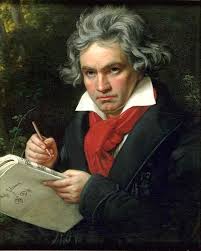
Music…
For me music is a special thing. I was going to the music school for 6 years. When I was a 7 years old my mother took me there. At first year I don’t want to go there, because I can’t sing very well. But after one year I understood that there were a lot of other interesting things there. And when I was ending music school I think that this was part of my life, and I was thank to my mother that she take me there. I learn to play the piano and composer .I learned a lot about history of music. I graduated music school with excellent marks.
What about my music preference, I am a “meloman”. This mean that I listen what I like. I like all tips of music! I like Europe, USA and Russian bands.
пятница, 6 февраля 2009 г.
module#2 (newspapers/magazines)
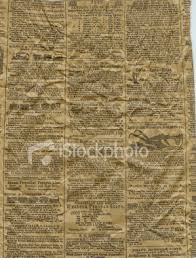
Newspaper is a publication that presents and comments on
the news. Newspapers play an important role in shaping public
opinion and informing people of current events.
The first newspapers were probably handwritten newssheets
posted in public places. The earliest daily newssheet
was "Acta Diurna" ("Daily Events") which started in Rome in
59 B.C. The first printed newspaper was Chinese publication
called "Dibao" ("Ti - pao") started in A.D.TOO's. It was
printed from carved wooden blocks. The first regularly
published newspaper in Europe was "Avisa Relation" or
"Zeitung", started in Germany in ] 609.
There are about 1 700 daily and 7 500 weekly newspapers
in the US. The circulation of some weeklies is no more than a
few hundred of copies per issue and the circulation of some
dailies is over a million of copies.
Magazine is one of the major mass media. Magazine is a
collection of articles and stories. Usually magazines also contain
illustrations.
The earliest magazines developed from newspapers and
booksellers catalogs. Such catalogs first appeared during the
1600's in France. In the 1700's pamphlets published at regular
intervals appeared in England and America. They were literary
publications. One of the first British magazines "The
Gentleman's Magazine" was published from 1731 to 1914.
The first American magazine was called the "American
Magazine", or "A Monthly View".
There are specialized magazines intended for special business,
industrial and professional groups, and consumer magazines
intended for general public. There are several kinds
of consumer magazines.
As for me? I read newspapers only in on-line format .I think they have a big role in the life of society. Because the newspapers are the first media that give the people any information.What for magazines?I don’t like them very much. Yes, they are interesting.But there usually is information about Star’s or any famous thing. I value at first the séance of information, and in the final analysis he form of it’s present.
среда, 4 февраля 2009 г.
module#2 (book)
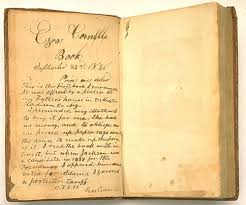
Book is the first media. Many, many years ago a town crier ran through the streets
and shouted out all the news. But now we live in the Atomic
Age. Too many things happen too quickly for us to learn
about them in the old-fashioned way. That is why we have to
read more and more in order to find out what is happening
in the world Reading is rarely a waste of time. Have you ever thought about the kind of books people
used long ago? It is only in the last 500 years that books have
been printed on paper. Before that time the only way of making
books was to write them out by hand. No one knows when
writing first began, but we have found drawings on the walls
of caves and scratchings on bones which are at least 25,000
years old.
In the 11th century the art of papermaking reached Europe
but no trace of printing was found in Europe until 1423. It
is known that Johann Gutenberg secretly tried out ways of
printing in Strasbourg, Germany, in 1440.
The knowledge of the methods of printing spread so quickly
over the Continent of Europe that by the year 1487 nearly
every country had started printing books.
As for me? In childhood I used to reading all the day. But now I don’t have enough time for that. But sometimes, when I am sitting down in the armchair, and read any interesting book (believe me it is so pleasant) I have a big enjoy.
понедельник, 2 февраля 2009 г.
Mesrop Mashtoc


Mesrop Mashtoc is the creator of Armenian alphabet. He was born in the Hacekac village of Taron’s area in 361. He toke a greece education in Antoik. He knew greek, asoric and persian langueges. In the early ages he come to the capital Vagarshapat and works in the palace of king. Here he graduated his education by reading. Then he serves on army. In the age of 30 he became a priest. When he so that Armenia need his own alphabet. It would help him to take the Bible to the usual people. And with this request to the king of Armenia Vramshapuh. He accepted with him and gave him a quest to do it! Mesrop traveled a lot. He was in the all centers of antic world. He was in Alexandrine, Greece, Persia and in the different parts of Armenia. After 20 years of traveling, in 405 Mesrop Mashtoc create Armenian alphabet! It is the greatest thing that he does for the surviving of Armenian nation! The first sentence that was written by Armenian was "To know wisdom and gain instruction; to discern the words of understanding..."
понедельник, 26 января 2009 г.
Edgmiatsin
 Ejmiatsin cathedral is the most ancient Christian temple of Armenia. It was built in 301-303 by Grigor Luysavorich, the founder of the Armenian Gregorian church. It rebuilt in 480's. It is the seat of the Katholikos (Catholicos).
Ejmiatsin cathedral is the most ancient Christian temple of Armenia. It was built in 301-303 by Grigor Luysavorich, the founder of the Armenian Gregorian church. It rebuilt in 480's. It is the seat of the Katholikos (Catholicos).The Cathedral is part of a monastery having the same name and is surrounded by walls which enclose a series of structures. These structures include the Palace of the Katholikos, a seminary, museum, refectory, synod house, library, printing house, monks' cells, and other buildings. Ejmiatsin is the spiritual center of all Armenians.
